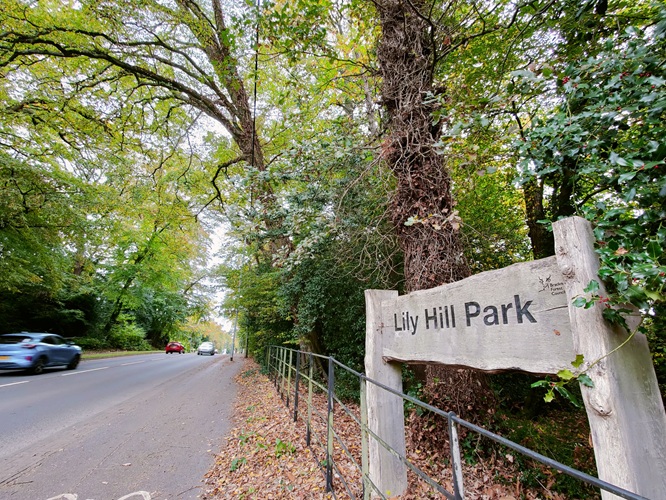
We are carrying out essential health and safety tree work at Lily Hill Park.
We have completed work to trees along the northern boundary. More recently, we have been working on trees to the south.
On Friday 21 November we will be working on 3 more trees. One of these is a large hornbeam tree, near the large white gates off London Road (A329). For safety reasons, London Road will be closed from 9:30am to 3:30pm on this date while we complete this work. There will be a diversion route in place. Find out more on One Network.
We apologise for any inconvenience this work causes.
Most of the park and its normal visitor routes are still open for use. Take care when visiting.
See below for a location map and more information about timings.
| Attachment | Size |
|---|---|
Document
Lily Hill Park tree work map
|
2 MB |
Work timings and locations
This year we have worked on:
- trees within the northern boundary along Lily Hill Road and Lily Hill Drive
- trees bordering Bracknell Rugby pitch and trees inside the southern park boundary, adjacent to London Road (A329)
On Friday 21 November we will spend one day working on 3 trees to the south, including a hornbeam near the white gates entrance. See work location map above for more information.
What we are doing
A comprehensive survey conducted by an independent, qualified arboriculturist (tree exert) identified work required to several trees.
Signs of deterioration from old age in trees might not always be obvious to us. This is why a survey of this nature is necessary. Experienced and qualified tree experts can use specialist equipment to better assess a tree's condition.
In the case of select trees at Lily Hill Park, the expert opinion is that the work must be done. This is so the trees don’t cause a future maintenance and safety concern.
Species we are working on include:
- Beech
- Cedar
- Chestnut (conker tree)
- English Oak
- Holly
- Hornbeam
- Lime
- Willow
We are using experienced contractors to conduct the following work:
- crown reduction - to address uneven growth, reduce weight, and improve the tree's overall structure
- lifting and pruning to establish clearance over the highway
- removing deadwood – to improve safety
- removing trees (see below)
Where possible, we try and retain trees through the work described above.
In certain cases, and as a last resort, we will need to remove trees that are unsafe if they are left in their current condition. This is where they are dead, diseased and/or structurally unstable.
We must complete this work to maintain public safety, in what is a very busy area of town near a main road, a popular park and nearby properties.
We are taking specialist advice to make sure the tree work is done correctly and sensitively. These trees are not protected by tree preservation orders.
Minimising disruption
We are working to minimise impact to park visitors and road users.
Visitor access within the park should largely remain unaffected. This is because the work is away from paths and key access routes.
To keep road users safe, we have put traffic management measures in place on roads surrounding Lily Hill Park.
There has been traffic management where required along on roads bordering Lily Hill Park. This is necessary to protect road users.
There may be some noise and dust generated by the heavy machinery. We are keeping this to a minimum where possible. We are also sharing this information with park users and residents who live nearby.
Stay away from work areas and follow advice in site safety signs.
Protecting wildlife
We are taking all necessary precautions to protect wildlife during the work.
Where possible, we are undertaking the work outside of bird nesting season.
We have commissioned a bat survey. Our contractors will also check for bat roosts.
In some cases, we may be able to safely retain some standing deadwood 'monoliths' at a safe height and create log piles. These will provide wildlife habitats for wildlife, such as species of beetles and other invertebrates.
Tree planting
Lily Hill Park has a rich tree heritage, which dates back hundreds of years.
Over the years, we have worked to preserve Lily Hill Park’s tree stock, including looking after veteran and specimen trees. This is through a careful programme of tree monitoring, maintenance and new planting.
The last round of major tree work we conducted was in 2001, as part of the heritage restoration of the park. This current work is an accumulation of tree work over a 25-year period.
We will follow up the tree work with a comprehensive programme of tree planting. Whilst this won’t immediately help to offset the loss of these trees, it will secure a future generation of parkland trees for people and wildlife to enjoy.